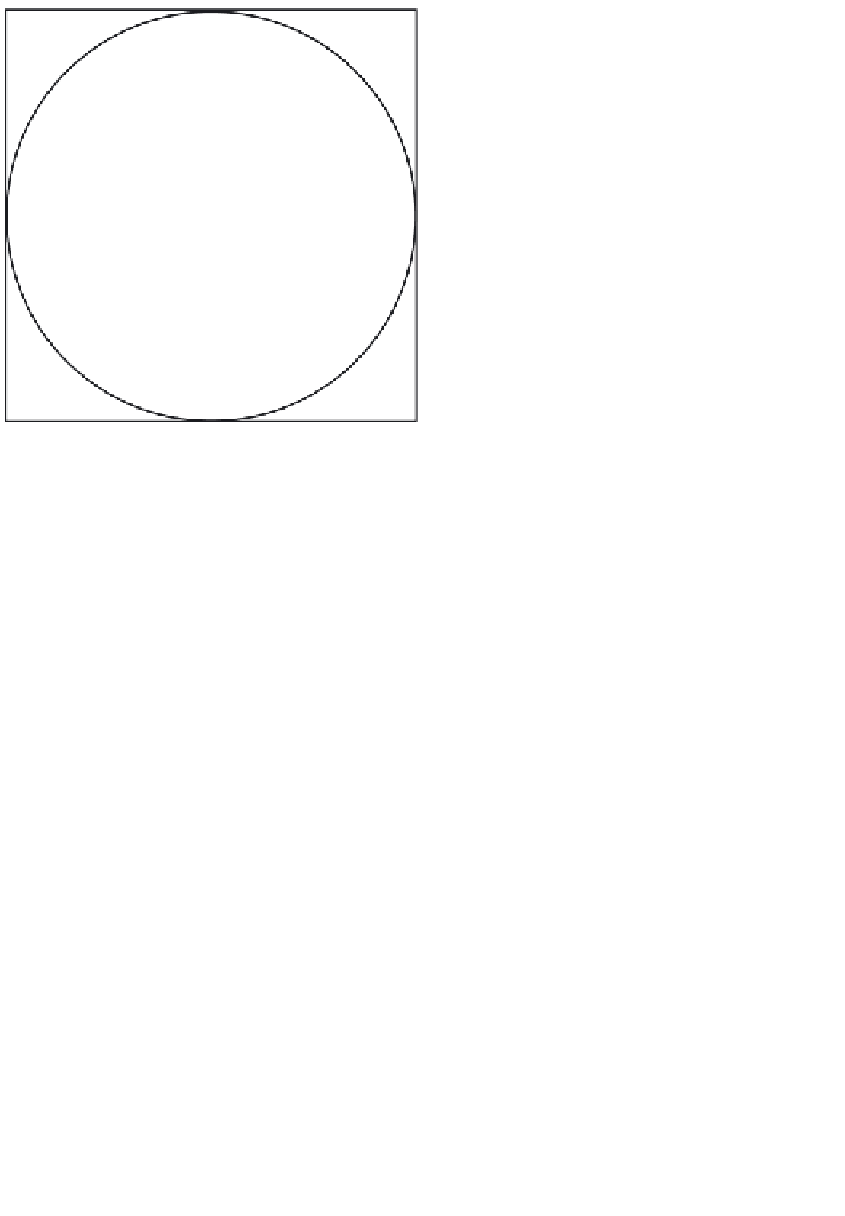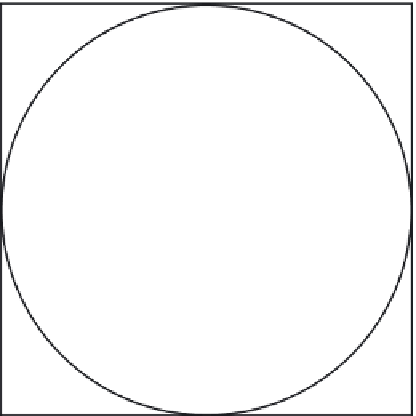Geoscience Reference
In-Depth Information
(A)
(B)
P
X
X
Man sees object P
P
Observed
path of
ball
X
Q
ti
at
Figure 6.2
The Coriolis deflecting force on a rotating turntable. A. An observer at X sees the object P and
attempts to throw a ball towards it. Both locations are rotating anticlockwise. B. the observer's position is
now X
′
and the object is at P
′
. To the observer, the ball appears to follow a curved path and lands at Q. The
observer overlooked the fact that position P was moving counterclockwise and that the path of the ball
would be affected by the initial impulse due to the rotation of point X.
force always acts at right angles to the direction
of the air motion, to the right in the Northern
Hemisphere (
f
positive) and to the left in the
Southern Hemisphere (
f
negative). Absolute
values of
f
vary with latitude as follows:
where Ω = the angular velocity (15° hr
-1
or 2π/24
radians hr
-1
for the earth = 7.29
10
-5
radians s
-1
);
φ = the latitude and
V
= the velocity of the
mass. 2
×
is referred to as the Coriolis
parameter (
f
). Angular velocity is a vector repre-
senting the rate of rotation of an object about the
axis of rotation; its magnitude is the time rate of
displacement of any point of the body.
The magnitude of the deflection is directly
proportional to: (1) the horizontal velocity of
the air (i.e., air moving at 10m s
-1
has half the
deflective force operating on it as on that moving
at 20m s
-1
); and (2) the sine of the latitude (sin 0
Ω
sin
φ
Latitude
0
°
10
°
20
°
43
°
90
°
f(10
-4
s
-1
)
0
0.25
0.50
1.00
1.458
The earth's rotation also produces a vertical
component of rotation about a horizontal axis.
This is a maximum at the equator (zero at the
poles) and it causes a vertical deflection upward
(downward) for horizontal west/east winds.
However, this effect is of secondary importance
due to the existence of hydrostatic equilibrium.
°
= 0; sine 90
= 1). The effect is thus a maximum
at the poles (i.e., where the plane of the deflecting
force is parallel to the earth's surface). It decreases
with the sine of the latitude, becoming zero at the
equator (i.e., where there is no component of the
deflection in a plane parallel to the surface). The
Coriolis 'force' depends on the motion itself.
Hence, it affects the direction but not the speed of
the air motion, which would involve doing work
(i.e., changing the kinetic energy). The Coriolis
°
3 The geostrophic wind
Observations in the
free atmosphere
(above the
level affected by surface friction at about 500 to
1000m) show that the wind blows more or less at
right angles to the pressure gradient (i.e., parallel



























